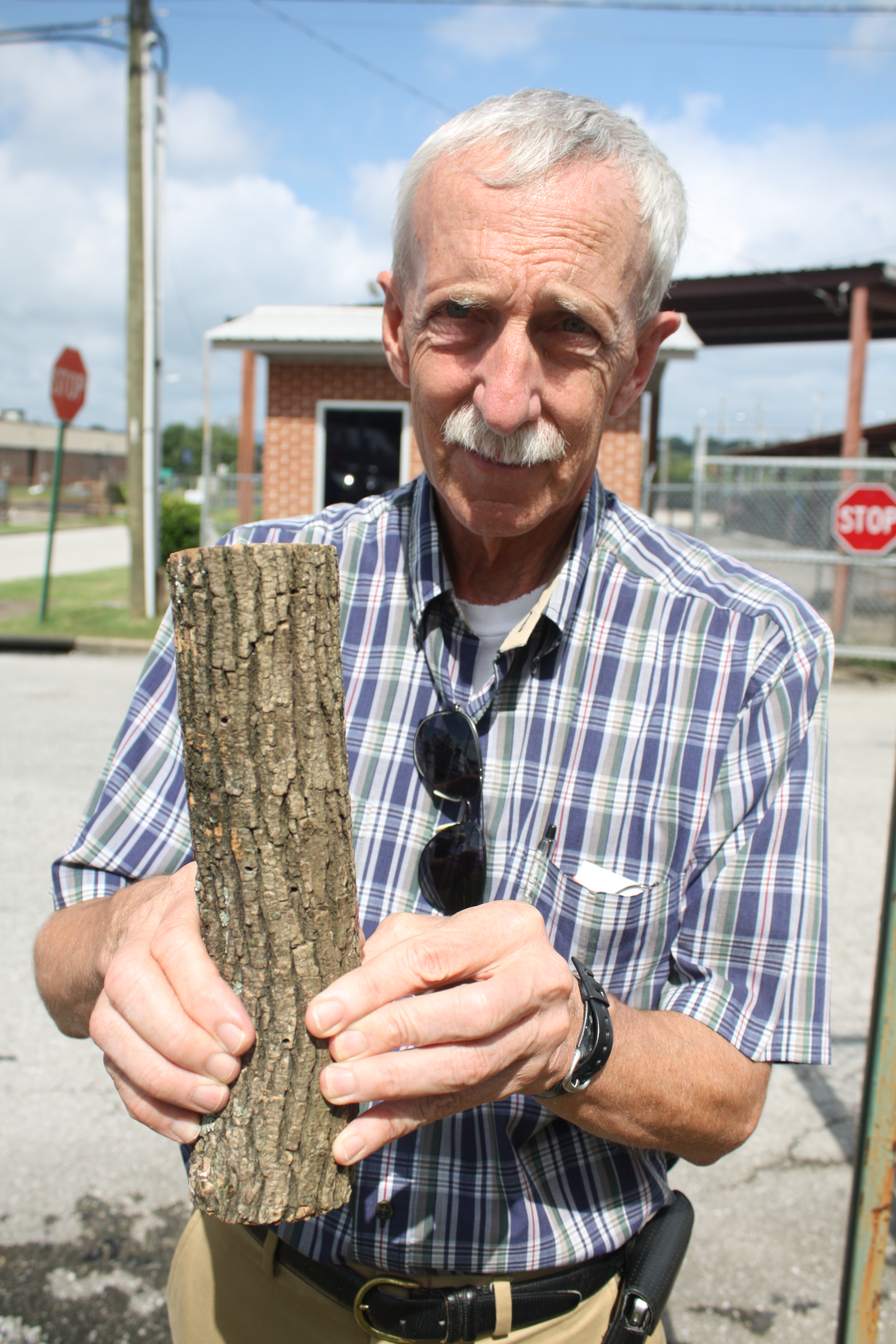EPB warns trees in greater Chattanooga area more likely to fall because of rains, infestation
Friday, August 2, 2013
 City Forester Gene Hyde holds a sample log while speaking at a press conference regarding the potential threat of the emerald ash borer in the South on Thursday next to the EPB Distribution Building. His fingers are placed at D-shaped exit holes where the ash borers, which spend their larvae lives in the trees, emerge as adults.
Staff photo by Shawn Paik
City Forester Gene Hyde holds a sample log while speaking at a press conference regarding the potential threat of the emerald ash borer in the South on Thursday next to the EPB Distribution Building. His fingers are placed at D-shaped exit holes where the ash borers, which spend their larvae lives in the trees, emerge as adults.
Staff photo by Shawn PaikVIDEO
This story is featured in today's TimesFreePress newscast.
Record rainfall has representatives of this area’s largest power provider concerned about losing trees.
Officials with EPB, which maintains more than 3,500 miles of power lines throughout Chattanooga and surrounding areas, called a news conference Thursday. This summer EPB personnel have seen nearly 650 trees that appeared to be healthy fall, damaging those lines.
“We’ve had a number of healthy looking trees uproot,” said George Morgan, EPB’s manager of vegetation management. “They just started falling. We started to notice they didn’t have large roots, like most trees that get uprooted.”
Because of drought conditions in previous summers, tree roots have weakened, Morgan said, and this summer’s record rainfall did not help the situation.
“The ground is saturated from large amounts of rainfall, and trees do not have a good foundation to root,” he said.
Gene Hyde, urban forester for the city of Chattanooga, said Morgan is right that years of adverse weather conditions and lots of rain can place seemingly healthy trees at risk to fall.
“It’s quite natural.” he said, “When you start getting huge amounts of rainfall, it reduces the surface tension between the roots and the soil.”
He said the problem is more common in the spring than summer. Summer heat usually causes water to evaporate quickly, he said.
But water alone isn’t to blame, Hyde said.
“There’re a lot of factors that come into play,” he said. Since 2007, extreme temperatures and droughts have caused root systems to die. A large, healthy-looking Oak could have a weakened root system as a result and be more susceptible to fall, Hyde said.
Also, he added, folks should not start cutting down trees out of fear they’ll fall.
“Would I say all trees are at risk? No, not really,” he said. “There is some irrational fear out there.” Pruning techniques alone can save a tree. An arborist should be consulted before action is taken, he said, to determine whether a tree is at risk.
EPB officials are also concerned that with predictions of August being the wettest month of the summer, even more trees are in danger.
“We are doing everything we can to prevent trees from falling on power lines,” Morgan said.
He said there are things every homeowner can look for to prevent damage to power lines, as well as homes and cars.
“If you live on a lot with a tree on a hill, watch the ground for cracks,” Morgan said. “This can mean the tree has weak roots. Also, if a tree sways when it hasn’t swayed before, this can be a sign of a tree about to fall.”
Rainfall isn’t the only natural threat to Chattanooga’s trees. The Emerald Ash Borer, a beetle from Asia, poses a threat for ash trees in the near future, officials said.
The beetle has caused extensive tree damage in the North and has been found in Chattanooga trees.
The ash borer begins its life as a larvae inside a tree and emerges when it is an adult. The larvae feed off the trees, causing them to lose about 30-50 percent of their canopies after only a few years of infestation. After about four to five years of heavy infestation, a tree is likely to die, experts say.